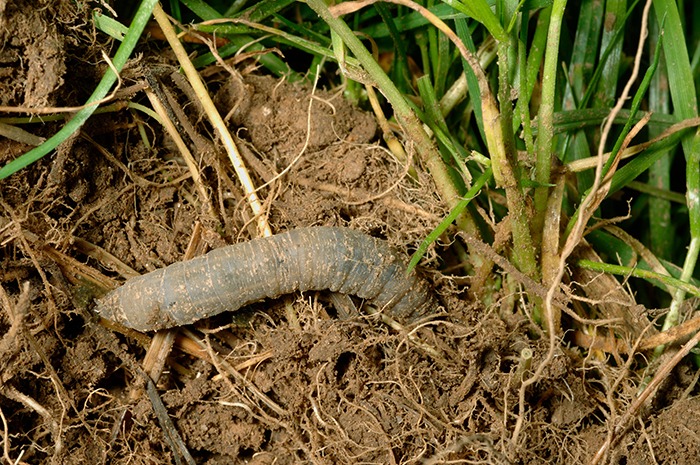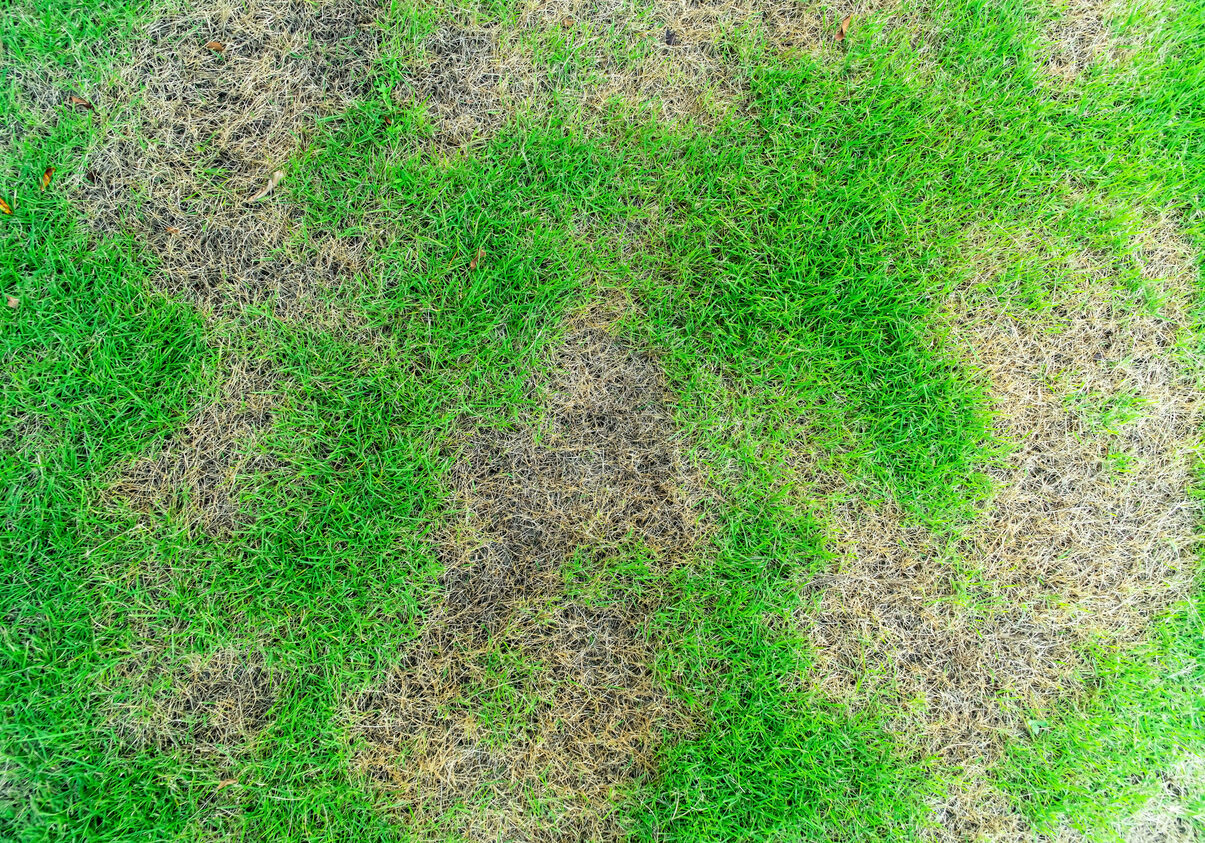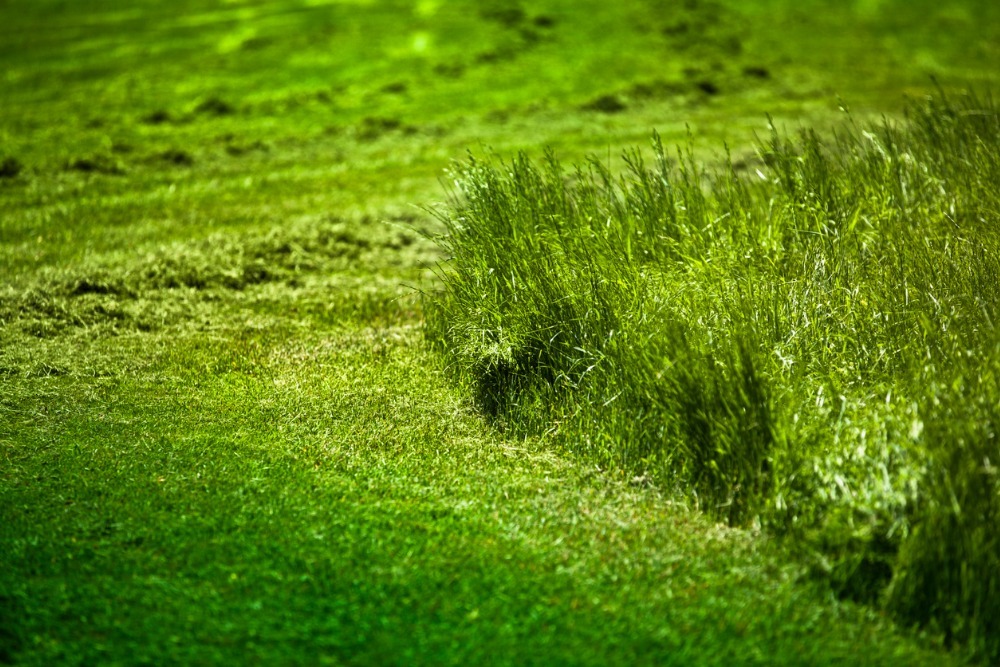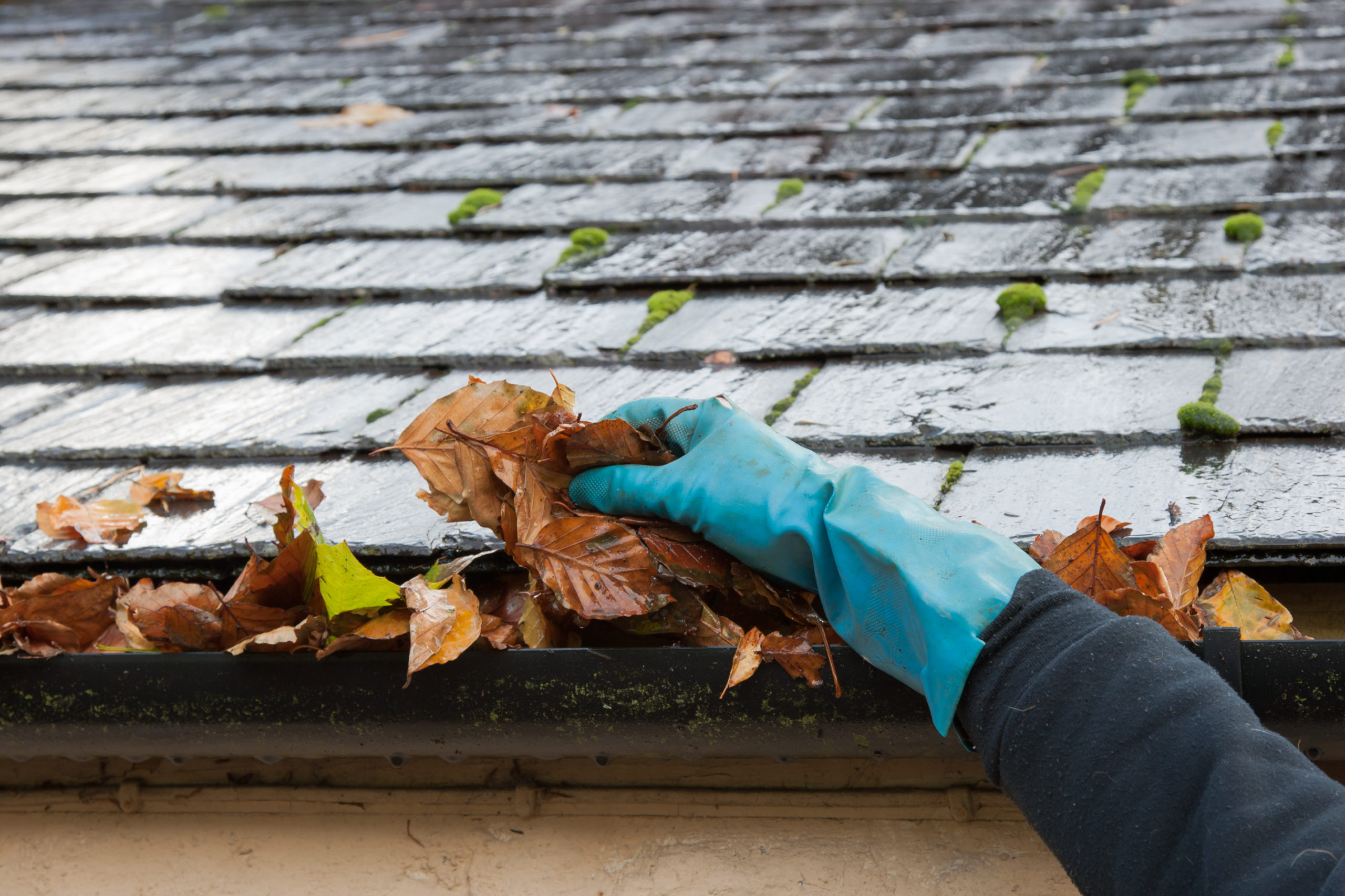What are leatherjackets?
Leatherjackets are the larvae of crane flies or daddylong-legs. Some species of these larvae feed on the roots of living plants and can be problematic for lawns and small plants in gardens.

Image credit: Which?
How to tell if leather jackets are a problem in your garden?
Leatherjackets can cause yellowish/brown or dead patches in lawns. To tell if this is being caused by leatherjackets, lift an area of affected turf and look for them in the surface layers of the soil. Leatherjackets have long tubular bodies and can grow up to 3cm long and are greyish brown and they don't have legs or an obvious head.
How do I control leatherjackets?
If leatherjackets have taken up residence in your lawn or plant pots, you can use a nematode or ringworm treatment as a biological control. The nematodes enter the bodies of leatherjackets and infect them with bacterial disease. Nematodes need soil that is well drained but moist and that has a temperature of 12°C and should be added to the affected areas including the turf around the impacted area.
Can I prevent leatherjackets from becoming a problem?
To prevent your lawn from being affected by leatherjackets, a nematodes or ringworm treatment can be applied to the lawn from September to early October. When using this type of treatment, always follow the suppliers' instructions to ensure the treatment is effective.
More information about leatherjackets can be found on the RHS and Which? websites.








